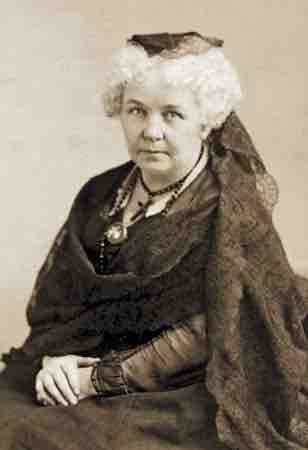Women and the Law
In eighteenth-century and early nineteenth-century America, the legal status of married women was defined as "coverture," meaning a married woman (or feme covert) had no legal or economic status independent of her husband. She could not conduct business or buy and sell property. Her husband controlled any property she brought to the marriage, although he could not sell it without her agreement. Women also lacked the right to bring suit, file for divorce, pursue legal recourse, or vote. Married women’s status as femes covert did not change as a result of the American Revolution, and wives remained economically dependent on their husbands. Many women in the early eighteenth century, however, began to agitate for legal equality between husbands and wives and for the same educational opportunities as men.
Married Women's Property Act
The Married Women's Property Act of 1839 was an act of statute in the state of Mississippi that significantly altered the law regarding property rights granted to married women, allowing them to own and control their own property. This was the first of a series of Married Women's Property Acts issued in the United States.
The Married Women's Property Act of 1848 was a statute in New York State. Paulina Wright Davis, Ernestine Rose, and Elizabeth Cady Stanton were among the activists who pressed for the act. While other states such as Mississippi had already passed the Married Women's Property Act, the 1848 New York state law was more extensive. Women's property rights were again extended in 1860. The Married Women's Property Act set a precedent for women's property rights that is thought to have influenced legislators' decision to maintain gender-neutral language in the Homestead Act of 1862, allowing any individual to file an application for a federal land grant.

Elizabeth Cady Stanton, ca. 1880
One of Elizabeth Cady Stanton's many accomplishments for women's rights was the Married Women's Property Act of 1839.
African-American Women
African-American women were even more disenfranchised under the law, facing the intersecting oppressions of gender and race. Missouri v. Celia, a murder trial that took place in Missouri in 1855, clearly illustrates these dual factors. It involved a slave woman named Celia and her master, Robert Newsome. After being purchased at the age of 14 in 1850, Celia bore two of her master's children. Soon after becoming intimate with another slave while still being sought after by her master, Celia became pregnant. On June 23, 1855, feeling unwell from the pregnancy, Celia pleaded with her master to let her rest; when Newsome ignored her pleas she struck him twice with a heavy stick, killing him.
Although Missouri statutes forbade anyone, "to take any woman unlawfully against her will and by force, menace or duress, compel her to be defiled," the judge residing over the case instructed the jury that Celia, being enslaved, did not fall within the meaning of "any woman." Thus, because the sexual abuser was her master, the murder was not justified on the claim of self-defense. Celia was found guilty of the crime on October 10, 1855, and was sentenced to be hanged. The case remains significant in American history because it graphically illustrates the reality that enslaved women had no recourse when it came to being raped or otherwise threatened by their masters.